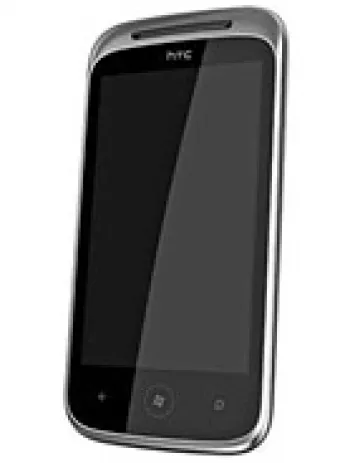
Introduction to HTC Desire C
The HTC Desire C was a budget-oriented smartphone released in 2012, offering a balance of essential features and functionality for everyday use. It marked HTC's continuation of the Desire series, catering to users who sought affordability without completely sacrificing performance.
Body and Design
In terms of its physical design, the HTC Desire C measures 107.2 x 60.6 x 12.3 mm and weighs 100 grams, making it relatively compact and lightweight. The phone features a simplistic and ergonomic design, with a plastic back cover available in three colors: Polar White, Stealth Black, and Flamenco Red. It uses a Mini-SIM card, which was common for phones of its era
Display
The HTC Desire C is equipped with a 3.5-inch IPS LCD screen, offering a resolution of 320 x 480 pixels. This results in a pixel density of approximately 165 ppi, adequate for basic tasks like browsing and messaging. Despite its modest resolution, the display's IPS technology ensures decent viewing angles and color reproduction.
Performance
Powered by a Qualcomm MSM7225A Snapdragon S1 chipset, the device includes a single-core 600 MHz Cortex-A5 CPU and an Adreno 200 GPU. While these specifications seem limited by today's standards, they were sufficient for handling basic smartphone activities like calls, texts, and light applications back in 2012.
Operating System and User Interface
The HTC Desire C runs on Android 4.0 Ice Cream Sandwich with HTC's Sense UI 4 overlay. This version of Android brought a range of improvements over its predecessors, such as better multitasking, improved widgets, and a revamped user interface. However, it's important to note that the Desire C could not be upgraded to Android 4.1 Jelly Bean, potentially limiting some app compatibility and feature availability.
Memory and Storage
The device comes with 512MB of RAM and 4GB of internal storage. Users can expand the storage using a microSDHC card, thanks to the dedicated slot, which provides a more flexible storage solution for media, apps, and other files.
Camera
On the photographic front, the HTC Desire C features a single 5 MP rear camera. The camera was fairly standard for a device in this category, offering basic photography capabilities. While it lacked advanced features like a front-facing camera or enhanced video recording options, it was sufficient for capturing everyday moments.
Battery Life
The device is equipped with a removable Li-Ion 1230 mAh battery, offering moderate endurance for day-to-day operations. Given its hardware constraints, the battery life was acceptable, as the device did not consume significant power.
Connectivity
The HTC Desire C is equipped with a variety of connectivity features including Wi-Fi 802.11 b/g/n, Bluetooth 3.0, A2DP, GPS, and optional NFC support. The device also includes a microUSB 2.0 port for charging and data transfer, alongside FM radio with RDS for entertainment. The network capabilities cover GSM and HSPA, providing reasonable network speed for mobile internet at the time.
Additional Features
Additional sensors include an accelerometer and proximity sensor. For audio, the device retains a 3.5mm headphone jack, allowing standard earphone connectivity. The loudspeaker and audio quality, although not exceptional, were adequate for a budget device, with specified dB levels ensuring audio clarity for calls and media consumption.
Market Position and Legacy
Initially priced at around 120 EUR, the HTC Desire C was positioned as an entry-level smartphone accessible to a wider audience. Despite its limitations, it was appreciated for providing reliable performance and essential smartphone features. As technology rapidly advanced, the HTC Desire C quickly became outdated, and its production was eventually discontinued. However, it remains a nostalgic reminder of the early smartphone era and HTC's contribution to affordable technology.
Key Features of HTC Desire C
- Compact and lightweight design with dimensions of 107.2 x 60.6 x 12.3 mm and a weight of 100 g.
- 3.5-inch IPS LCD display offering decent visual quality.
- Runs on Android 4.0 (Ice Cream Sandwich) with Sense UI 4, providing user-friendly navigation.
- Powered by Qualcomm MSM7225A Snapdragon S1 chipset and a 600 MHz Cortex-A5 CPU.
- Expandable storage via microSDHC card slot.
- 5 MP main camera capable of video recording.
- Comprehensive connectivity options including Wi-Fi, Bluetooth 3.0, GPS, and optional NFC.
- Includes a 3.5mm audio jack and stereo FM radio with RDS.
- Available in multiple colors: Polar White, Stealth Black, and Flamenco Red.
HTC Desire C Key Disadvantages
- Low screen resolution of 320 x 480 pixels resulting in a low pixel density (~165 ppi).
- Outdated Android version (4.0 Ice Cream Sandwich) with no official upgrade path to newer versions.
- Underpowered CPU at only 600 MHz (Cortex-A5), leading to potential performance issues with more demanding apps.
- Limited internal storage of 4GB which can be quickly filled, though expandable with microSDHC.
- Lacks a front-facing camera for selfies or video calls.
- 5 MP rear camera without advanced features or high video resolution.
- Relatively small battery capacity (1230 mAh) might not support long usage periods.
- Discontinued status, which means no availability of updates or official support.











View Also
More Phones
All Rights Reserved +14266 Phones © Mobilawy 2025

























